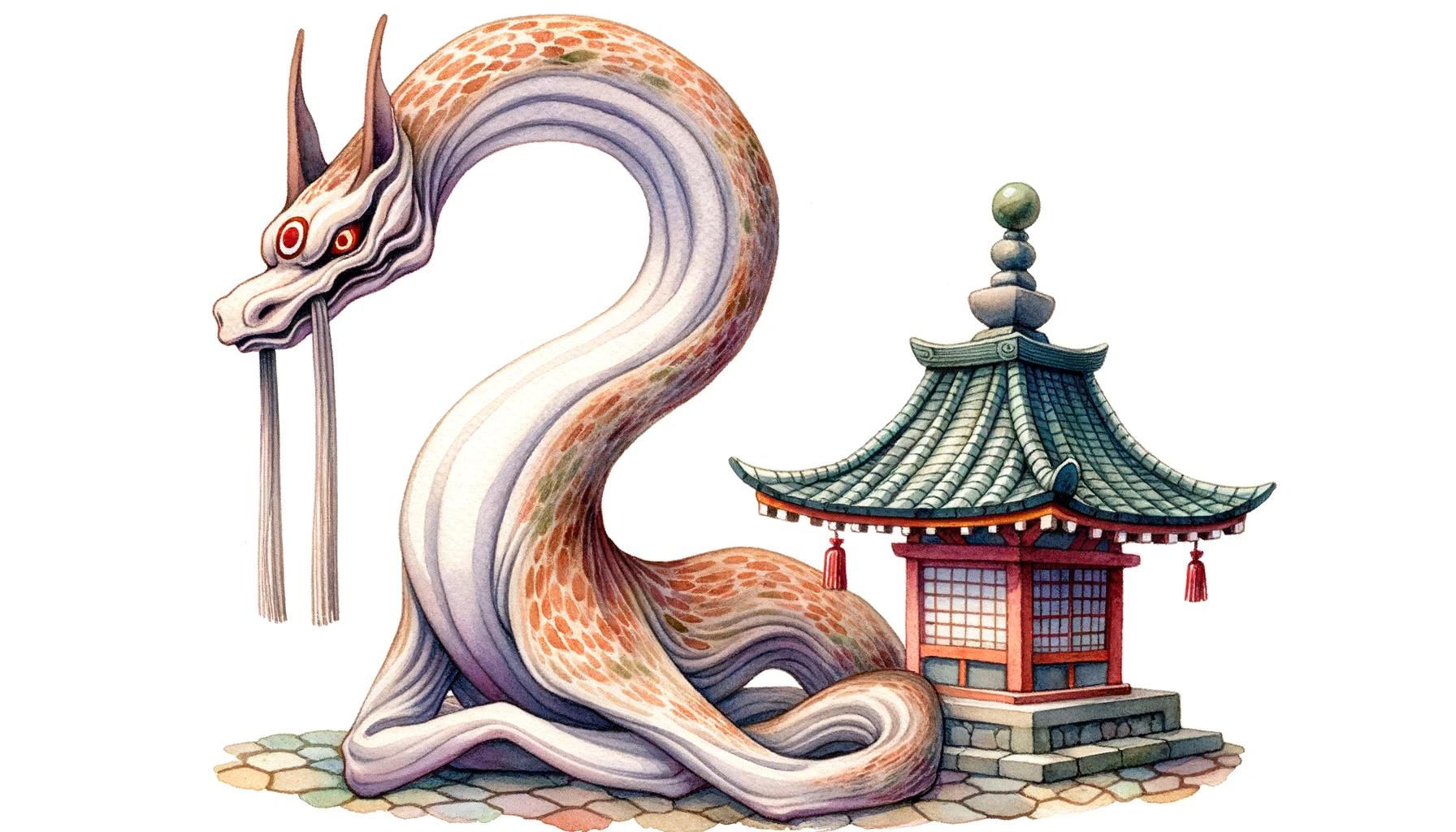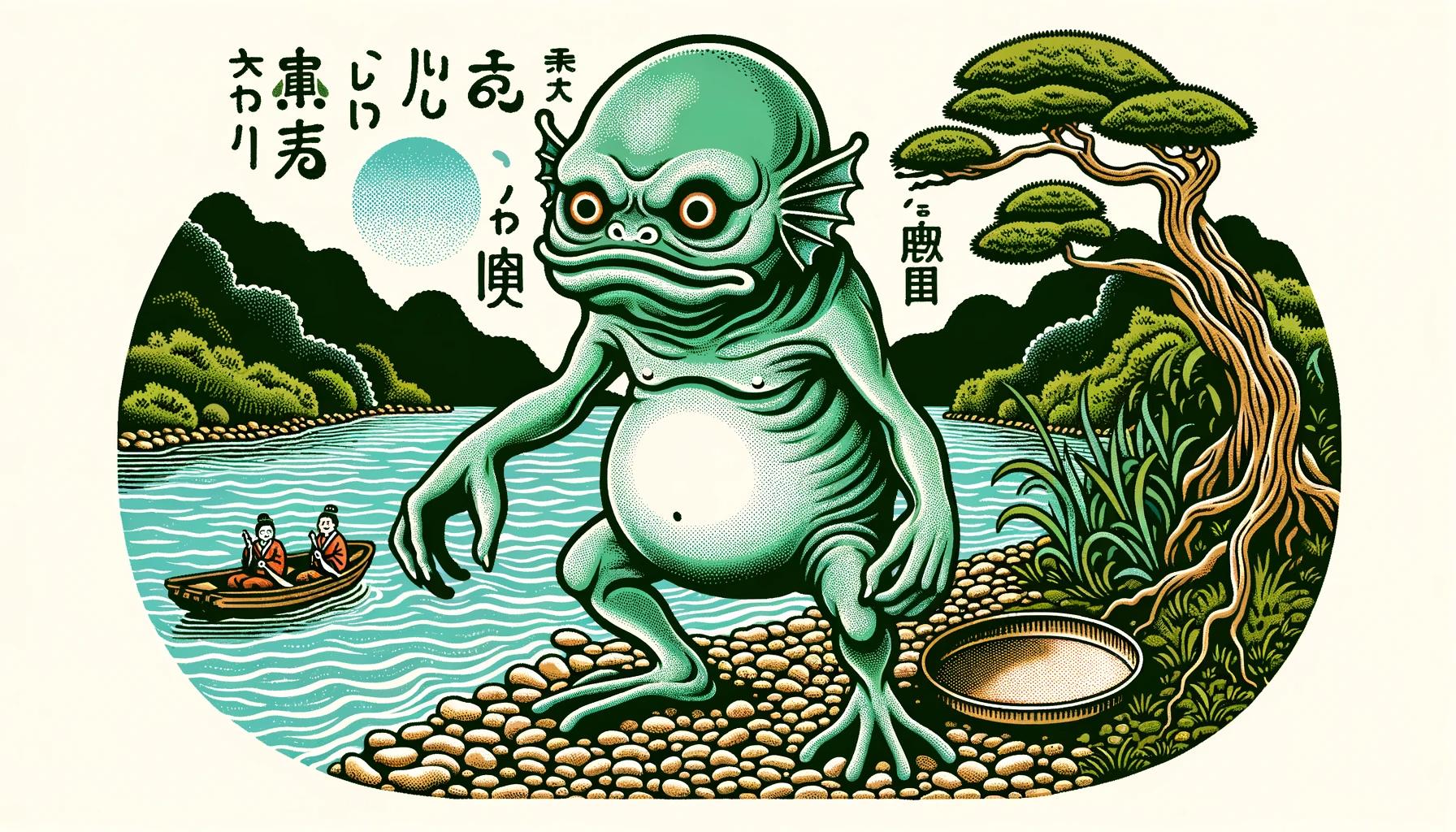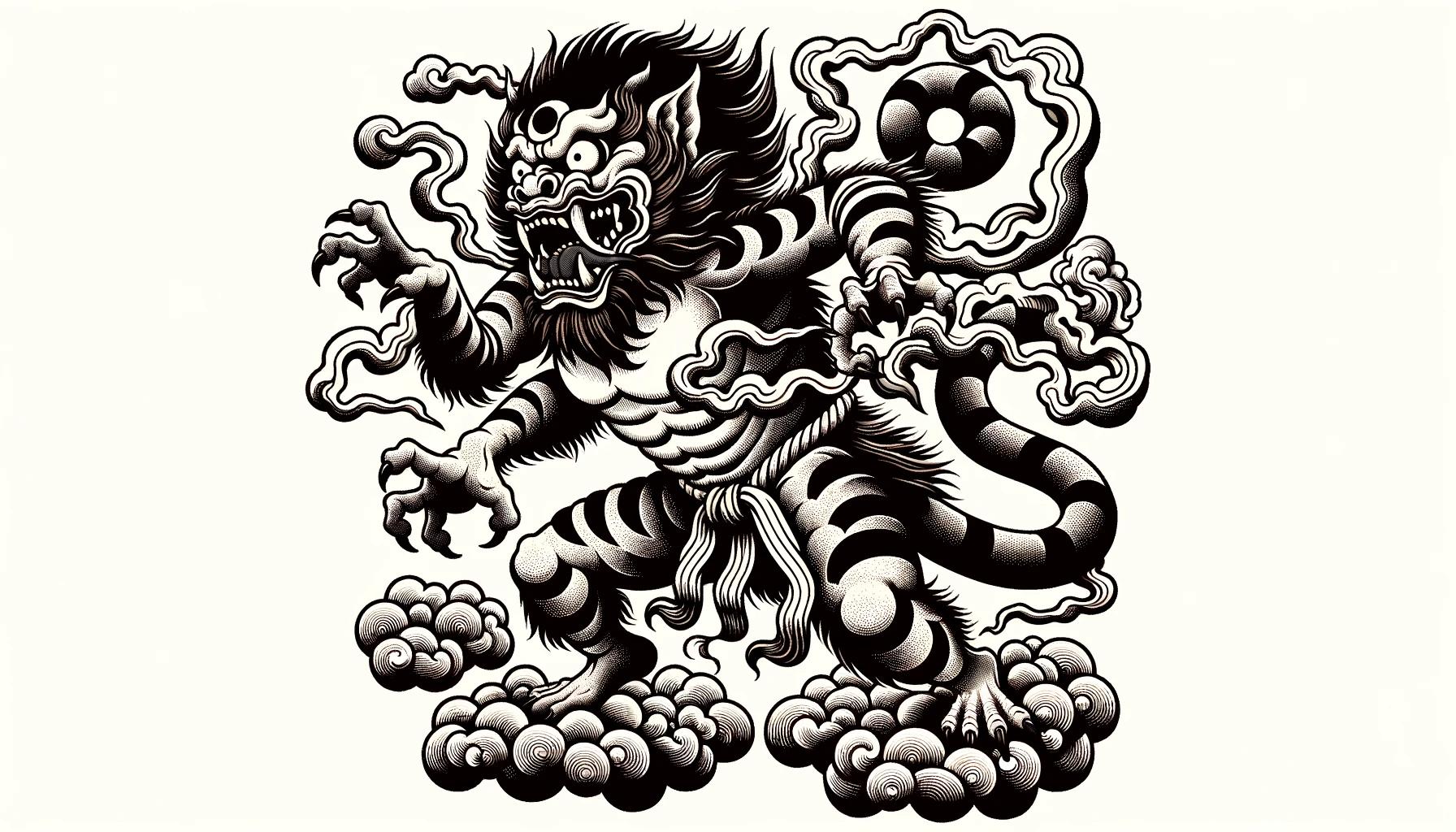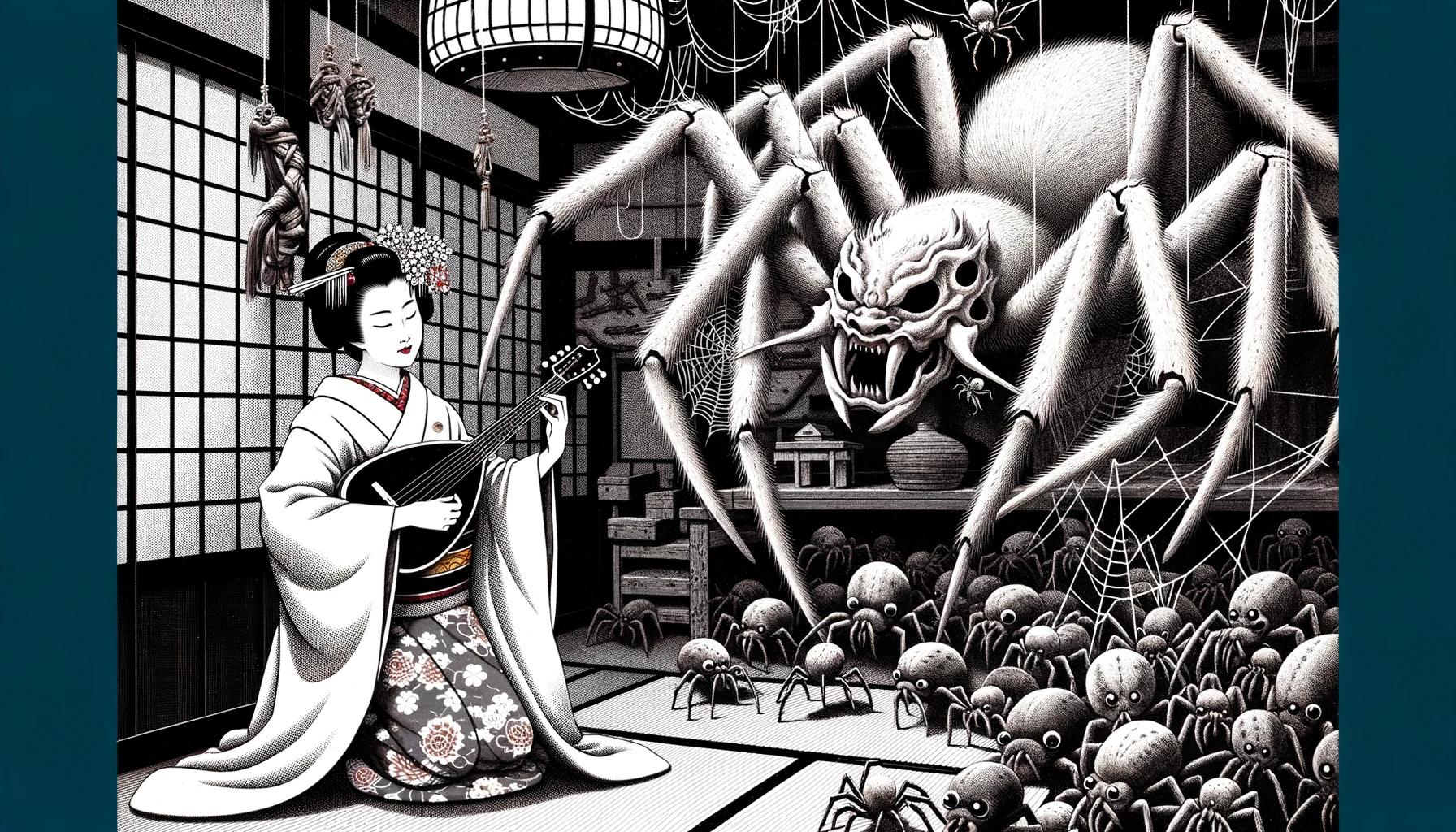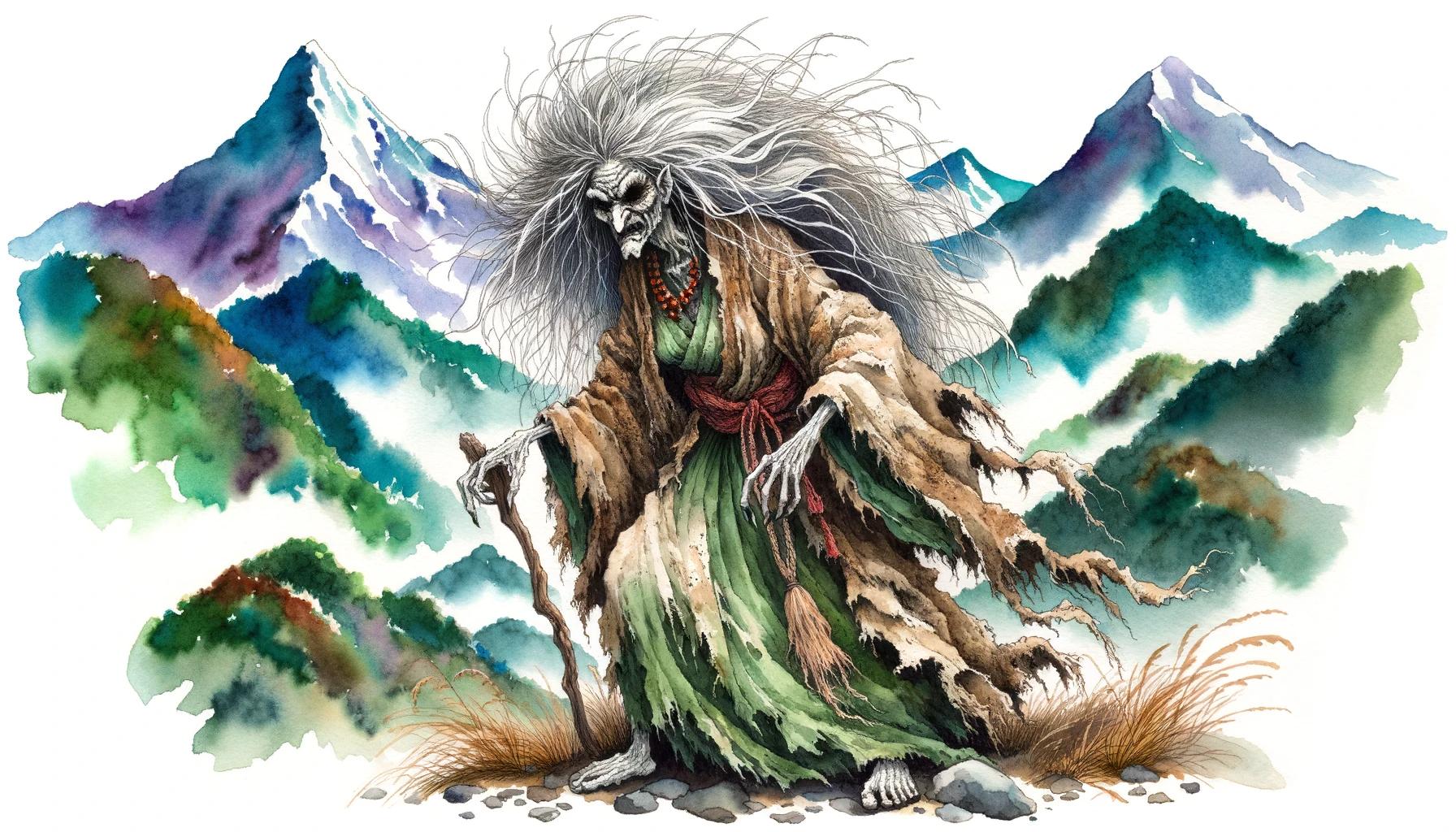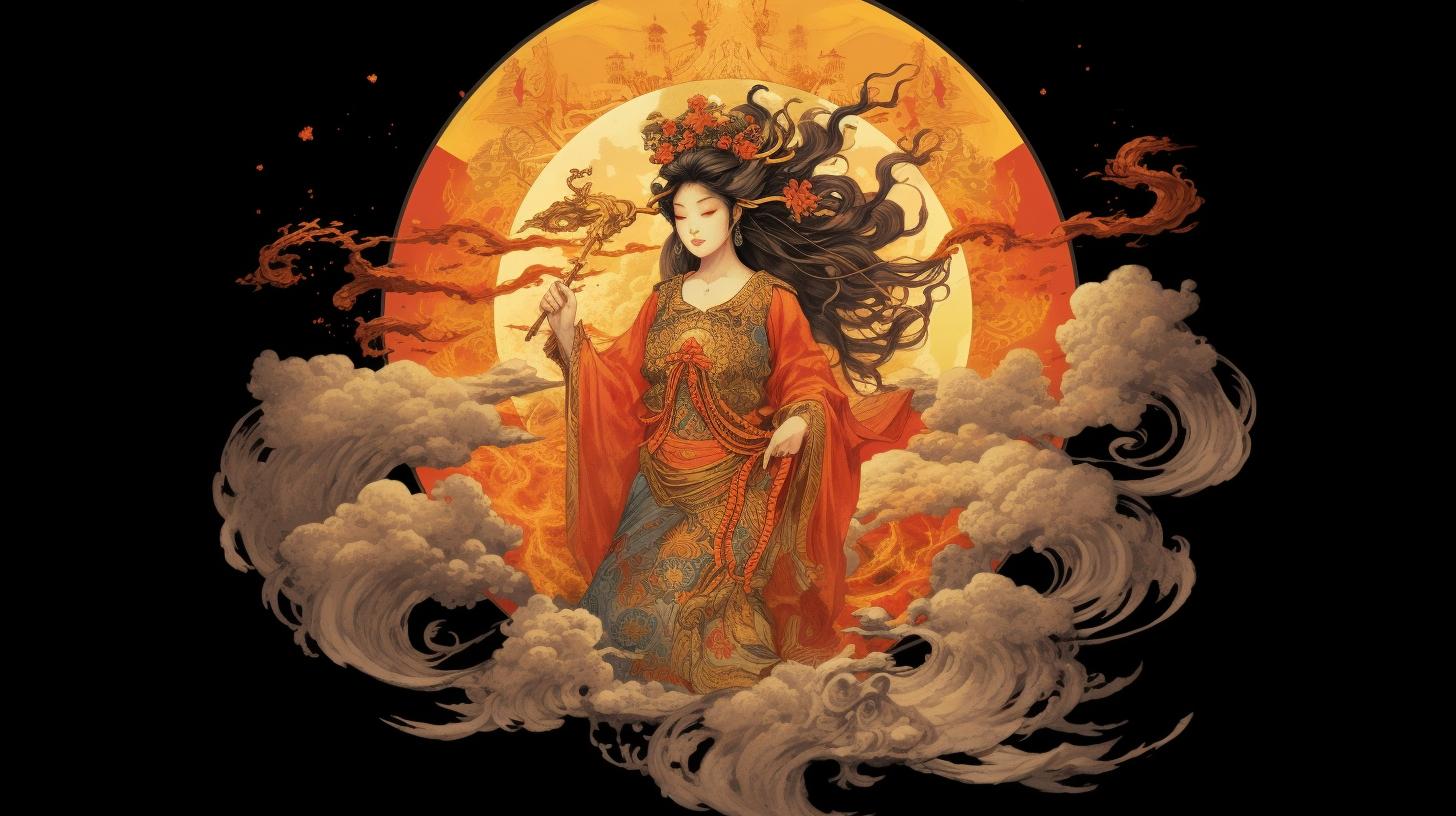Japanese Urban Legend Rokurokubi Yokai: Unveiling the Dark Secrets
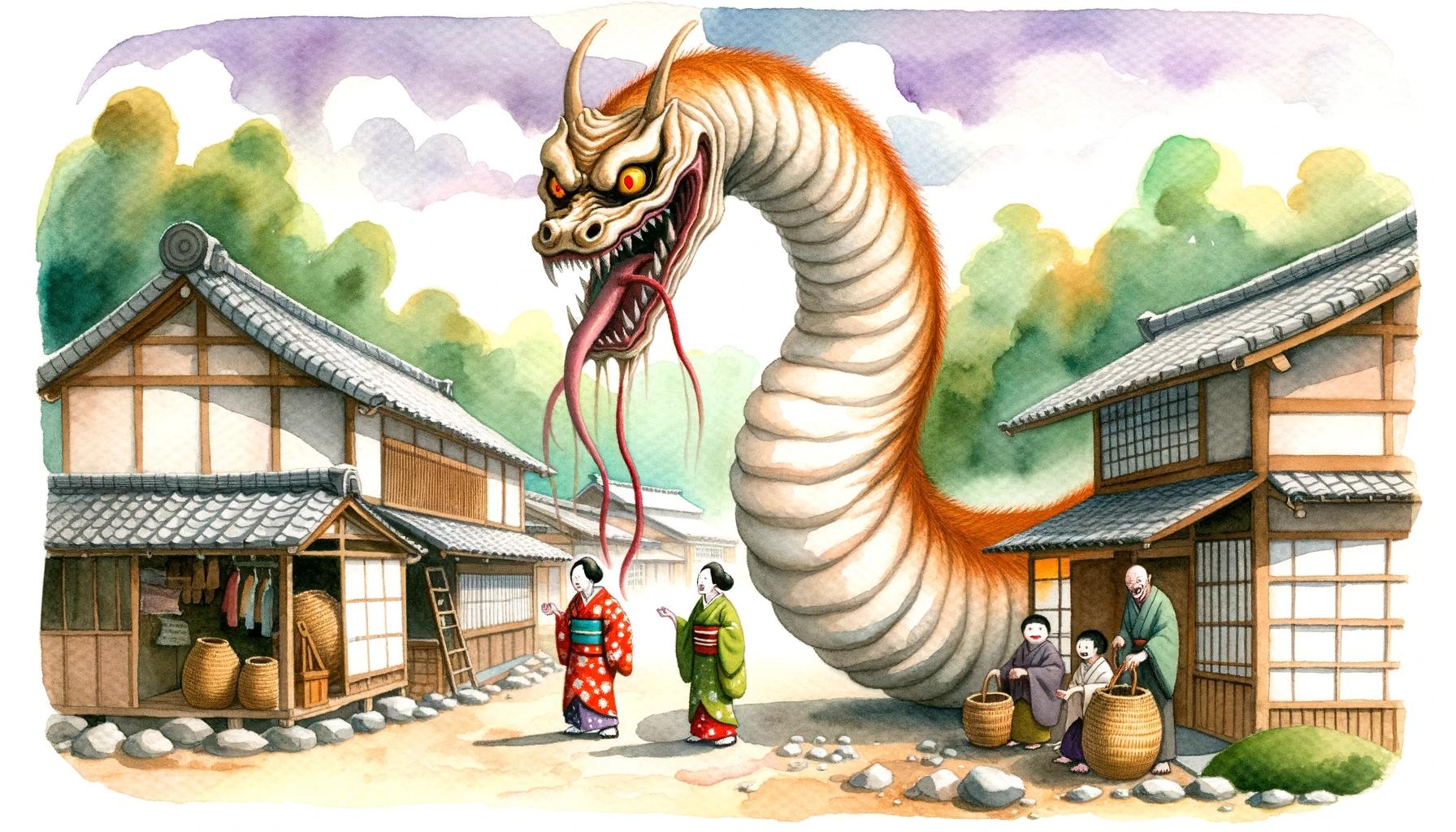
The Rokurokubi yokai is a captivating Japanese urban legend that has intrigued people for generations. These mythical creatures are believed to be ancient women cursed for their transgressions against the divine or nature.
During the day, they appear as ordinary women, but at night, their necks stretch in extraordinary ways as they consume lamp oil. Variations of the Rokurokubi include the Nukekubi, who can detach their heads and engage in malicious actions like attacking and drinking blood.
These chilling tales of supernatural beings have left a lasting impression in Japanese folklore and continue to captivate audiences to this day.
The Rokurokubi Yokai: Exploring the Japanese Urban Legend
Welcome to the mysterious world of the Rokurokubi yokai, an intriguing Japanese urban legend that has mesmerized people for centuries.
In this section, we will delve into the origins, folklore, and variations of this captivating creature.
Origins and Folklore of the Rokurokubi
The Rokurokubi’s roots can be traced back to Japanese folklore, where it has been passed down through generations. According to the tales, Rokurokubi are believed to be ancient women who, due to their transgressions against the gods, nature, or their spouses, have been cursed to transform into these supernatural beings.
The Curse and Transformation of Rokurokubi
Under the curse, Rokurokubi appear as ordinary women during the day, concealing their true nature. However, when night falls, their necks extend unnaturally, allowing them to engage in their peculiar habits, such as consuming lamp oil.
The transformation and the curse they bear add layers of mystery to their existence.
Variations: Nukekubi and Other Yokai
Within the realm of Rokurokubi yokai, there exist intriguing variations. One such variant is the Nukekubi, who not only possess the ability to stretch their necks but can also detach their heads entirely, freely roaming while seeking their malicious intents.
Additionally, numerous other yokai inhabit the Japanese folklore, each with their unique characteristics and stories to tell.
Nighttime Terror: Behaviors and Actions of Rokurokubi and Nukekubi
Explore the chilling behaviors and actions of the Rokurokubi and Nukekubi yokai, as they reveal their sinister nature under the cover of darkness.
Supernatural Abilities of the Rokurokubi
The Rokurokubi possess extraordinary supernatural abilities, with their most notable trait being the ability to stretch their necks to unimaginable lengths. Under the moonlit sky, these ethereal creatures extend their long necks, capturing the attention and fear of unsuspecting victims.
While their neck extension is their most infamous ability, some legends claim that Rokurokubi can also detach their heads, allowing them to fly freely in the night. This chilling manifestation sends shivers down the spine and introduces an entirely new level of horror.
Dark Deeds: Attacks and Consumption of Victims
When night falls, the Rokurokubi and Nukekubi engage in dark and malevolent deeds, preying on unsuspecting victims to satisfy their gruesome cravings. These legendary creatures have been reported to attack and feed on the blood of those unfortunate enough to cross their path.
Legends warn of their insatiable appetite for lamp oil, an eerie substance that sustains their supernatural existence. They are often depicted slinking through the darkness, silently consuming oil from unsuspecting sources, leaving fear and inexplicable occurrences in their wake.
Mysterious Encounters: Stories of Floating Heads and Hauntings
Tales of Rokurokubi and Nukekubi encounters are filled with eerie floating heads and haunted disturbances that instill terror in those who witness them. Witnesses claim to have encountered these headless beings roaming in the darkness, their heads suspended in mid-air.
Such encounters are often accompanied by a pervading sense of dread and unexplained phenomena.
One harrowing tale tells of a wandering monje who, haunted by his crimes, fell victim to the transformation of his own head into that of the person he had wronged.
The horrifying sight served as a chilling reminder of the consequences and retribution that awaited those who succumbed to their darker impulses.
As the night falls and the Rokurokubi and Nukekubi awaken, their supernatural abilities, dark deeds, and mysterious encounters come alive in the trepidation of those who dare to delve into the world of Japanese urban legend.
Legends and Tales of Rokurokubi Yokai
The Rokurokubi yokai has spawned numerous captivating legends and tales that have been passed down through generations. These stories shed light on the cursed existence of these supernatural creatures and the misfortunes they bring to those who encounter them.
The Monastery Murder: A Story of Regret and Revenge
In this chilling tale, a monastic figure embarks on a treacherous journey with a young woman named Oyotsu. However, as sickness befalls Oyotsu, the monk succumbs to greed and commits a heinous crime, murdering her and stealing her money.
The night brings an eerie twist as the monk’s head transforms into Oyotsu’s, accusing him of her murder. Haunted by guilt, the monk confesses his crime to the innkeeper, who reveals his own dark secrets.
Deceptive Servant: Unveiling a Rokurokubi Undercover
Intrigue surrounds a master who suspects one of his servants to be a Rokurokubi due to the mysterious disappearance of lamp oil. Determined to uncover the truth, the master spies on the sleeping servant and witnesses her neck stretching while in a deep slumber.
The next day, the servant remains oblivious to her Rokurokubi nature as she is dismissed from her position. Little does she know that misfortune follows her in every subsequent job she takes.
Haunted Misfortune: Curses and Misery of Rokurokubi Victims
Rokurokubi unleash curses and bring misery upon those who cross their paths. Countless tales recount the unfortunate fate of individuals who become entangled with these otherworldly beings. From endless torment to relentless haunting, the victims of Rokurokubi are subject to a lifetime of misfortune, haunted by the supernatural forces that plague them.
Cultural Significance: Rokurokubi in Japanese Art and Merchandise
Exploring the captivating world of the Rokurokubi yokai, it’s clear that their presence extends beyond folklore and tales. The cultural significance of Rokurokubi can be observed in various aspects of Japanese art and merchandise, capturing the intrigue and mystery surrounding these supernatural beings.
Fashion and Accessories Inspired by Rokurokubi
The allure of the Rokurokubi has influenced fashion trends in Japan, inspiring unique garments and accessories. Fashion enthusiasts can find themselves drawn to the enchanting charm of Rokurokubi-inspired designs, which can be seen in jackets, kimonos for men, jinbei, and traditional Japanese shirts.
Accessories such as tabi socks, obi belts, Japanese fans, Japanese bags, and Japanese masks also reflect the influence of Rokurokubi in Japanese fashion.
Home Decor and Ornaments Reflecting the Legend
Embracing the mystique of Rokurokubi, many homeowners adorn their living spaces with decorative items that pay homage to this legendary creature. From traditional noren curtains to cushion covers, kokeshi dolls, Japanese lanterns, and ornamental figures, these elements add a touch of folklore and intrigue to any Japanese-themed home decor.
Culinary Delights: Rokurokubi-Inspired Tableware and Tea
The cultural significance of Rokurokubi has even made its way into the culinary world. Japanese cuisine enthusiasts can enhance their dining experiences with Rokurokubi-inspired tableware and tea accessories. Delight in the aesthetics of themed dishware, chopsticks, knives, bowls, and teapots.
These unique pieces not only add a touch of folklore to the dining table but also elevate the sensory experience of enjoying Japanese cuisine.
Discover the captivating world of Rokurokubi yokai as it transcends folklore to inspire various facets of Japanese culture.
From fashion and accessories to home decor and culinary delights, Rokurokubi’s cultural significance is a testament to the enduring allure of these supernatural beings in modern-day Japan.
Unveiling the Enigma: Interpretations and Meanings of Rokurokubi
Spiritual and Paranormal Explanations of the Rokurokubi Phenomenon
The Rokurokubi legend has sparked various spiritual and paranormal interpretations over the years.
Some believe that these supernatural beings represent the consequences of violating divine or natural laws. They are seen as embodiments of punishment for sins committed in past lives. Others view the Rokurokubi as spiritual entities that exist between the physical and metaphysical realms, possessing the ability to separate their heads from their bodies as a manifestation of their ethereal nature.
Psychological and Symbolic Perspectives on the Legend
From a psychological standpoint, the Rokurokubi legend has been analyzed as a metaphor for repressed desires or hidden transgressions within individuals. The notion of the elongated neck symbolizes the inner conflict between societal expectations and personal impulses.
Symbolically, the detached head represents a loss of control and identity, reflecting themes of guilt, deceit, and the consequences of indulging in forbidden desires.
Modern Pop Culture References and Adaptations
The captivating nature of the Rokurokubi legend has left its mark on modern pop culture. It has been a source of inspiration for various forms of media, including literature, film, anime, and video games.
These adaptations often explore different aspects of the legend and creatively reimagine the Rokurokubi within contemporary contexts. From horror movies to thrilling video game encounters, the Rokurokubi continues to intrigue and entertain a global audience, maintaining its enigmatic allure across diverse cultural interpretations.
- Some spiritual perspectives view the Rokurokubi as punishment for past sins.
- The Rokurokubi’s ability to detach their heads can be seen as a representation of their ethereal nature.
- Psychologically, the legend showcases themes of inner conflict and repressed desires.
- The detached head symbolizes loss of identity and the consequences of indulging in forbidden desires.
- Modern adaptations of the Rokurokubi legend can be found in literature, film, anime, and video games.
- These adaptations creatively reimagine the legend within contemporary contexts.
- The global appeal of the Rokurokubi legend persists, captivating audiences across diverse cultural interpretations.
Exploring Other Japanese Urban Legends and Yokai
An investigation into the vast realm of Japanese folklore reveals a treasure trove of captivating urban legends and supernatural creatures beyond the Rokurokubi.
Let us delve into other intriguing tales and entities that have captured the imagination of the Japanese people for centuries.
Comparisons and Contrasts: Rokurokubi and Similar Creatures
While the Rokurokubi stands out with its unique ability to stretch its neck, it is fascinating to draw comparisons and contrasts with other yokai of Japanese folklore. Some notable creatures worth exploring include:
- – Kuchisake-onna: The legendary “Slit-Mouthed Woman” with a haunting visage and a propensity for asking unsettling questions.
- – Kitsune: The shape-shifting fox spirits known for their cunning and trickery, capable of assuming human form.
- – Yuki-onna: The “Snow Woman” who appears during winter and can be both serene and deadly.
Famous Yokai Encounters in Japanese Folklore
Japanese folklore is replete with fascinating stories of miraculous encounters and terrifying ordeals involving various yokai.
Some renowned narratives include:
- – The Tsuchigumo: A monstrous spider-like creature known for its malevolent nature, often depicted as a devourer of humans.
- – The Kappa: A mischievous water-dwelling creature that lures unsuspecting victims into rivers and ponds.
- – The Noppera-bō: A yokai capable of taking on the appearance of a human, only to reveal its featureless face, causing shock and confusion.
Traditional Beliefs and Superstitions Surrounding Yokai
Beyond the fantastical tales, yokai have long held a place in traditional Japanese beliefs and superstitions.
These enigmatic beings are intertwined with cultural practices and beliefs, such as:
- – Rituals to ward off yokai, ensuring protection against their mischievous or malevolent actions.
- – Beliefs in the transformative powers of certain yokai, allowing humans to adopt their shape or abilities for various purposes.
- – The portrayal of yokai in literature, theater, and art as a reflection of societal fears, desires, and moral lessons.
From shape-shifting fox spirits to eerie encounters with faceless entities, exploring these fascinating Japanese urban legends and yokai opens a gateway to a mysterious world beyond our own.
FAQ: Common Questions about Rokurokubi and Yokai Legends
What is the Rokurokubi yokai legend?
The Rokurokubi yokai legend is a captivating Japanese urban legend that tells the tale of ancient women cursed with the ability to stretch their necks or detach their heads during the night.
These supernatural beings were believed to have been punished for their transgressions against the gods, nature, or their husbands.
How are Rokurokubi different from Nukekubi?
While both Rokurokubi and Nukekubi are yokai associated with the same legend, they have some distinct differences. Rokurokubi can extend their necks to extraordinary lengths, while Nukekubi have the ability to detach their heads completely and fly freely.
Additionally, Nukekubi are often depicted as more malevolent, engaging in acts such as attacking and drinking the blood of their victims.
What are the origins of Rokurokubi and its transformations?
The origins of the Rokurokubi legend can be traced back to ancient Japanese folklore. It is believed that these women were transformed into yokai as a result of curses or divine punishment for sins committed in their previous lives.
The specific reasons for their transformations vary across different versions of the legend, with some stories suggesting sins against the gods or nature, and others involving infidelity or betrayal.
Are there any real-life sightings or encounters with Rokurokubi?
While the legend of Rokurokubi has captivated people’s imaginations for generations, there have been no confirmed real-life sightings or encounters with these mythical creatures.
The stories and accounts surrounding Rokurokubi primarily exist within the realm of folklore and urban legends.
What is the cultural significance of Rokurokubi in Japan today?
The Rokurokubi legend continues to hold cultural significance in Japan. It serves as a cautionary tale, highlighting the consequences of immoral or sinful actions. Rokurokubi and other yokai are often featured in various forms of Japanese media, including literature, art, movies, and anime, keeping the legend alive in contemporary culture.
How has Rokurokubi influenced popular culture and entertainment?
Rokurokubi and yokai legends, in general, have heavily influenced popular culture in Japan. These mythical creatures frequently appear in literature, films, manga, and video games, captivating audiences with their eerie and supernatural traits.
Their unique characteristics and dark narratives have made them popular elements for storytelling and have contributed to the rich tapestry of Japanese folklore.
Are there any precautions or protections against encountering Rokurokubi?
Although Rokurokubi and yokai generally exist within the realm of folklore and fiction, traditional belief systems in Japan suggest various precautions and protections against encountering these supernatural beings.
These include rituals, charms, and talismans believed to ward off evil spirits. However, it is essential to remember that these practices are rooted in mythology and folklore rather than being grounded in actual encounters with Rokurokubi.
.

